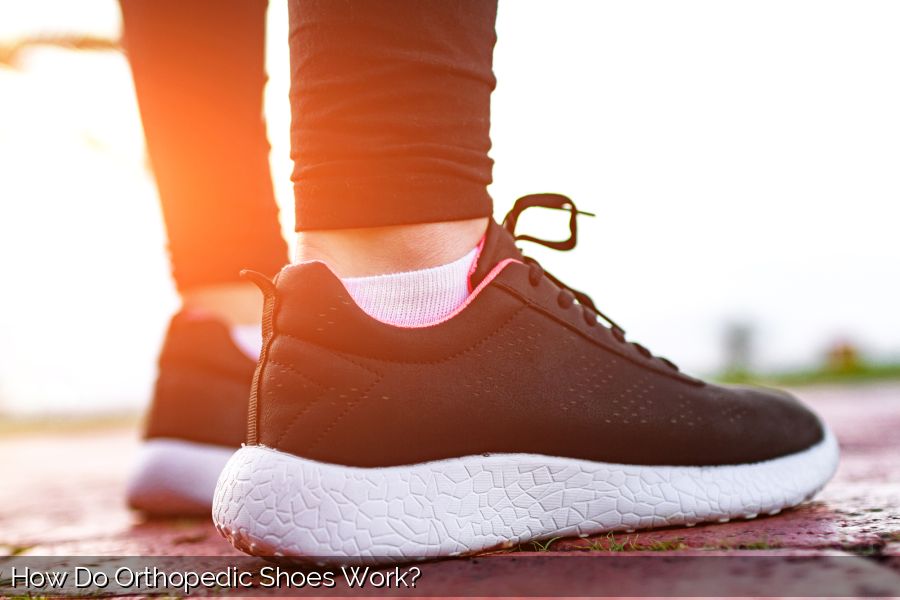How Do Orthopedic Shoes Work?
Orthopedic shoes are designed to provide your feet with ample room for the toes. They often come in wider sizes than normal shoes, which means your feet won’t be rubbing inside the shoe. Another benefit of orthopedic shoes is that they don’t have heels that push your feet forward. Choosing the right pair will help encourage proper blood flow in your feet. So, if you’re in the market for a new pair of shoes, read on to learn more about the benefits of wearing an orthopedic shoe.
Memory foam orthotics
If you’ve been suffering from foot pain, you may have heard of memory foam orthotics in orthopedic shoes. They work by supporting and stabilizing the foot and promoting proper alignment. However, flimsy memory foam is not effective at providing this support. Orthotic manufacturers use a more durable material for arch support, stability, and comfort. The thicker the foam, the better, as it molds to the shape of the foot. However, it may take up more space in your shoes.
Memory foam is viscoelastic, which means that it can change shape and bounce back. It also offers cushioning and support by adapting to the shape of the foot. It also reacts to pressure and heat from the foot, making it perfectly suited to match the contours of your foot and support specific areas. Memory foam insoles can be used in a variety of footwear, including sneakers, dress shoes, and work boots.
As an orthotic, these insoles have many benefits. They can alleviate foot pain caused by flat or arch problems. They can also relieve pressure on corns, spurs, and neuromas. Even better, they can improve your posture and reduce fatigue in your legs. And because they are made of memory foam, you can find them easily at any store. There’s no reason to wait until you’re suffering from foot pain or a bunion to feel relief. You’ll soon notice the difference.
Cushioning
One of the most common benefits of orthopedic shoes is the cushioning they provide. Cushioning in orthopedic shoes can provide the arch support you need and additional comfort. They also keep your feet cool and dry. Most types of cushioning in orthopedic shoes are made of foam, gel, or plastic. Because they do not fit custom to the foot, you will want to choose a size up from your normal shoe size. You can also purchase extra-large cushioning to help your feet recover after prolonged wear.
Orthopedic shoes with a cushioned sole offer maximum support for high arches and rigid feet. These shoes are made with lightweight materials and provide optimal cushioning with minimal rigidity. When shopping for orthopedic shoes, be sure to try on different types of shoes. Try on shoes for running or standing before purchasing them. You can also try on orthotics or braces while trying on shoes. Be sure to try them on to find out what fits you best.
Orthopedic shoes made with foam or gel insoles will provide excellent shock absorption and complete foot support. Many styles include a removable orthotic insole. These are also available in sandal and high-heel styles. Cushioning is very important in orthopedic shoes. Orthopedic shoes are made to provide superior comfort, so you should find a style that you like and fits well. You can find a comfortable and stylish orthopedic shoe that suits your lifestyle and your feet.
Wide toe box
Many people who have bunions or other foot problems benefit from wearing a pair of orthopedic shoes. These shoes are designed to accommodate custom orthotics and have wide toe boxes to ease pressure and pain. They also feature therapeutic detailing to promote mobility and ultimate comfort. In addition, many orthopedic shoes are comfortable and stylish, with many models having a removable footbed to help relieve pressure on sensitive areas. Here are a few examples of shoes with wide toe boxes.
These shoes feature a breathable upper to promote airflow while providing additional comfort. Some models have a padded liner for added cushioning on the toes and other sensitive areas of the foot. They also include a rubber sole that adds bounce to the step and prevents inflammation. These shoes also feature a reinforced heel for stability and support. They are available in a variety of colors, ranging from bright neon colors to neutral black.
To find an orthopedic shoe with a wide toe box, you should know the size of your feet. A doctor can measure your feet and tell you the proper size of orthotic shoes. If you don’t know the size of your feet, you can trace them in socks and note the width at the widest part of the foot. Another way to measure your foot is to use a Brannock device. The width of your foot should be snug but not too tight.
Cushioned holes
A cushioned hole is a design element that is often included in orthopedic shoes. The cushioned hole is a way to help reduce pressure on the foot by making it more comfortable. Another design feature is a balloon patch, which cuts a hole over a bony prominence and fastens a soft patch over it. Closure modifications add materials to the upper portion of the shoe to make it easier to put on and remove the shoe. This design can be beneficial for patients who have difficulty putting on and taking off their footwear.
Adjustable straps
Adjustable straps in orthopedic footwear are extremely important for ensuring a proper fit. They also provide the comfort of orthopedic footwear while accommodating swelling and bandaging. Some orthopedic footwear even includes a square toe box to protect the toes. Other features include an airflow-friendly material and a semi-open style for added breathability. Orthopedic foam insoles provide shock absorption and cushioning, so these shoes are ideal for post-op use.
The soles of these shoes are typically firm for support and shock-absorbing. They also have extra toe room and firm heel and arch support. You can also buy them as a preventative measure to help avoid problems. In fact, many people who have foot pain and other related conditions can benefit from orthopedic shoes. If you have a foot problem, orthopedic shoes can help alleviate discomfort and improve overall health. Listed below are some of the main features of an adjustable strap in orthopedic shoes.
The Aetrex Orthotic System is another feature of Vionic orthopedic shoes. This shoe has excellent arch support and a memory foam footbed. Adjustable straps on these orthopedic shoes are made with hidden hook and loop closures rather than velcro. Some users have complained that the velcro on some models comes undone. While some orthopedic shoes feature adjustable straps, other shoes do not. However, the best way to find an orthopedic shoe is to read reviews about the shoes and decide for yourself which one works for you.
Custom orthotics
How do custom orthotics work? This article will cover the basics and answer your questions. Custom orthotics can be very helpful for patients with foot pain or arthritis. They are a prescription-free foot support that fits inside of your shoes. There are many different types of orthotics to choose from. Some are custom-made insoles, while others are mass-produced arch supports. Both types are equally effective, but the difference is in their effectiveness.
In some cases, custom orthotics are prescribed by your doctor for various conditions, including positional issues. These devices can also help treat underdeveloped foot and leg muscles. In other cases, they are used as part of a larger treatment plan for foot problems, in conjunction with supportive shoes and physical therapy exercises. Other treatments for foot pain may be more appropriate, however. A thorough examination is required to determine the source of your foot pain and whether custom orthotics are an effective solution for your particular case.
Biomechanical dysfunctions are the primary reasons for foot pain. If left untreated, these problems can lead to chronic pain and discomfort in the lower back, muscles, and joints. Custom orthotics restore proper distribution of forces over the foot and shift excess force away from problematic areas. This prevents pain, fatigue, and stress. And since custom orthotics are custom-made, they’re the ideal solution for many people suffering from foot pain.

